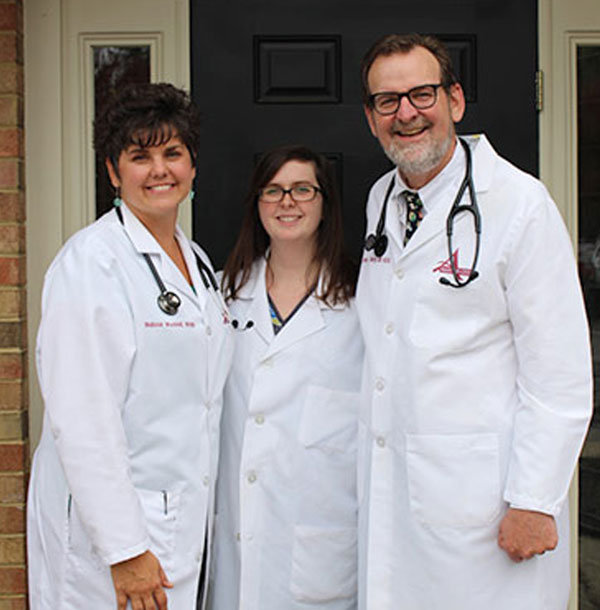What is a hysterectomy?
A hysterectomy is a surgery in which the uterus is removed. In addition to the uterus, other female organs may also be removed, such as the cervix, ovaries, and fallopian tubes. After having a hysterectomy, you will not be able to have anymore children.
There are several different techniques in performing a hysterectomy.
- An abdominal hysterectomy (TAH) is done through an incision on the lower part of the abdomen.
- A vaginal hysterectomy (TVH) is done through an incision inside the vagina.
- A laparoscopy assisted vaginal hysterectomy (LAVH) combines a laparoscopic procedure with a vaginal hysterectomy.
Dr. Hardy will evaluate the size the uterus in addition to your other symptoms and recommend the hysterectomy that is best for you.
In addition to different techniques in performing a hysterectomy, there are also different types of hysterectomies.
They include:
- A radical hysterectomy is the removal of the uterus (womb), cervix, ovaries, fallopian tubes, and pelvic lymph nodes. Since the ovaries are removed, you will be put into surgical menopause.
- A total (simple) hysterectomy is the removal of the uterus and the cervix, but not the ovaries or tubes. You will not experience menopausal symptoms as a result of this surgery.
- A subtotal (partial, supracervical) hysterectomy is the removal of the uterus, but the ovaries, cervix, and fallopian tubes are left in place. You will not experience menopausal symptoms after this surgery.
- A total hysterectomy with bilateral salpingo-oophorectomy is the removal of the entire uterus, cervix, both ovaries and tubes. This will also put you into surgical menopause. If only one ovary is removed, it is called either a right or left salpingo-oophorectomy and the remaining ovary can maintain your estrogen levels to prevent menopause right away.
When is it used?
There are many reasons why a hysterectomy would be recommended, and they are:
- tumors in the uterus (fibroids)
- constant heavy bleeding that has not been controlled by medicine or dilatation and curettage (D&C)
- endometriosis that causes pain or bleeding and does not respond to other treatments
- chronic pelvic pain
- a fallen (sagging) uterus referred to as prolapse
- precancerous or cancerous cells or tissue on the cervix or in the uterus.
- severe, chronic infections such as pelvic inflammatory disease
- stress incontinence (loss of urine with coughing, sneezing, exercise)
- benign ovarian tumor, if persistent or symptomatic
- pelvic adhesions (bands of scar tissue)
Examples of alternatives to a hysterectomy are:
- taking medicines to control the problem
- having a hysteroscopy or laparoscopy
- continue having D&Cs to control abnormal bleeding
- choosing not to have treatment, recognizing the risks of your condition.
How do I prepare for a hysterectomy?
Plan for your care and recovery after the operation because you will have general anesthesia. Allow for time to rest. Try to find other people to help you with your day-to-day duties. Expect to stay in the hospital for 1-3 days before being allowed to go home. The time in the hospital depends on the extent of procedures that you had done with the hysterectomy.
You should not smoke before or after the surgery. Smokers heal more slowly after surgery. They are also more likely to have breathing problems during surgery. For this reason, if you are a smoker, you should quit at least 2 weeks before the procedure. It is best to quit 6 to 8 weeks before surgery. Also, your wounds will heal much better if you do not smoke after the surgery.
Eat a light meal, such as soup or salad, the night before the procedure. Do not eat or drink anything after midnight and the morning before the procedure. Do not even drink coffee, tea, or water.
You will need to recover at home for 4 to 6 weeks without work or heavy lifting. You will have a postoperative appointment at which time Dr. Hardy can check on your recovery and review any restrictions with you.
What happens during the procedure?
You will be given a general anesthetic. A general anesthetic relaxes your muscles and causes a deep sleep. It will prevent you from feeling pain during the procedure.
Usually a catheter (small tube) is placed into your bladder through the urethra (the tube from the bladder to the outside). The catheter drains the bladder.
You will have an IV in your arm to give you fluids and medicines.
Dr. Hardy makes a cut in the abdominal wall to expose the ligaments and blood vessels around the uterus. The doctor separates the ligaments and blood vessels from the uterus. The doctor ties off the blood vessels so they will heal and not bleed. Then, the uterus is removed by cutting it off at the top of the vagina. The top of the vagina is repaired so that a hole is not left. If the procedure is done vaginally, there will not be any incisions on the abdomen. With laparascopic assisted vaginal hysterectomies, you will have an incision in the belly button and 3 small incisions in the lower abdomen along with the incision on the inside of the vagina.
What happens after the procedure?
The IV and catheter are removed 1 or 2 days after the surgery. You may stay in the hospital about 1 to 3 days.
After you go home, get plenty of rest. Do not do any heavy lifting or otherwise strain the stomach muscles for 4 to 6 weeks.
If you were having menstrual periods before the surgery, you will no longer have them after the operation. You also cannot become pregnant. If your ovaries were removed, menopause starts right away and Dr. Hardy may prescribe hormone therapy. Be sure to discuss any concerns you have about these effects and treatments with him before the surgery.
What are the benefits of this procedure?
A hysterectomy takes care of problems you may have been having with your uterus. For example, it removes any tumors that may have been in your uterus which will decrease the back pain, cramps, pelvic pain and it stops menstrual periods.
What are the risks associated with this procedure?
- There are some risks when you have general anesthesia.
- excessive bleeding that may require a blood transfusion
- inadvertent injury to the bladder, intestine, ureters (the tubes going from the kigneys to the bladder) or nerve damage
- urinary tract infection
- bowel obstruction
- vaginal pain
- fistula (abnormal opening) between vagina and bladder or rectum
- infection of incision
- blood clot in the legs that can travel to the lungs
- the incision may open up
When should I call the office?
Call the office right away if:
- You develop a fever over 100°F (37.8°C).
- You become dizzy and faint.
- You have nausea and vomiting.
- You have chest pain.
- You become short of breath.
- You have heavy bleeding from the vagina.
- You have leakage from the incision or the incision opens up.
- You have swelling, redness, or pain in your leg.
- You have diarrhea that does not stop.

